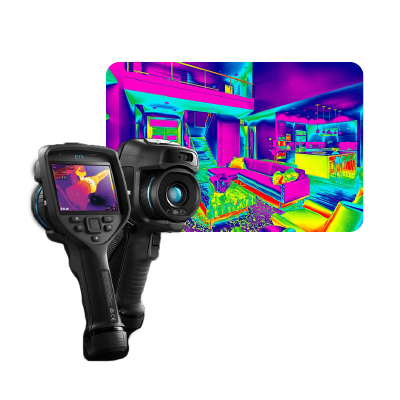Infrared Imaging
Find Hidden Issues with Infrared Imaging from Carson Dunlop
The Côté Team Proudly Serves Halifax, Dartmouth, Lower Sackville, Bedford, Hammonds Plains, Fall River, & Surrounding Communities
When it comes to maintaining the integrity of your home or commercial property, some issues can go unnoticed by the naked eye. Infrared imaging, also known as thermal imaging, is a powerful tool that allows us to detect hidden problems behind walls, ceilings, and floors.
By capturing temperature variations, infrared imaging reveals issues such as moisture intrusion, electrical hotspots, insulation gaps, and structural defects that might otherwise be missed. Our professional infrared imaging inspections provide you with a detailed look into the health of your property, helping you prevent costly repairs and maintain a safe environment.
What's Included with a Thermal Scan?
Our certified inspectors will use high-resolution thermal cameras to look for temperature anomalies that could indicate potential problems. After capturing the thermal images, we analyze the data to identify any issues. This analysis includes interpreting the thermograms and determining the most likely cause of any anomalies.
Following the thermal scan, you’ll receive a detailed report that includes the thermographic images, our findings, and recommendations for any necessary repairs or further investigation. The report is easy to understand and serves as a valuable tool for maintaining your property.


The Benefits of Thermal Imaging
-
1. Detect Hidden Moisture.
Moisture can lead to mold growth, wood rot, and structural damage if not addressed promptly. Infrared imaging helps identify areas of moisture intrusion, such as leaks behind walls, roof leaks, or plumbing issues, before they become major problems. -
2. Uncover Electrical Hazards.
Electrical issues, such as overloaded circuits or faulty wiring, can create dangerous hotspots that may lead to fires. Infrared imaging detects these hotspots, allowing for timely repairs and reducing the risk of electrical fires. -
3. Identify Insulation Deficiencies.
Proper insulation is crucial for energy efficiency and maintaining a comfortable indoor environment. Infrared imaging can reveal gaps or deficiencies in insulation, helping you address energy loss and reduce heating and cooling costs. -
4. Assess Structural Integrity.
Structural issues, such as weakened beams or compromised foundations, can pose significant risks to the safety of your property. Infrared imaging can detect temperature variations that may indicate structural problems, enabling early intervention. -
5. Non-Invasive and Quick.
Unlike other inspection methods that may require drilling, cutting, or other invasive procedures, infrared imaging is completely non-destructive. The process is quick, allowing for a thorough inspection with minimal disruption to your property.

